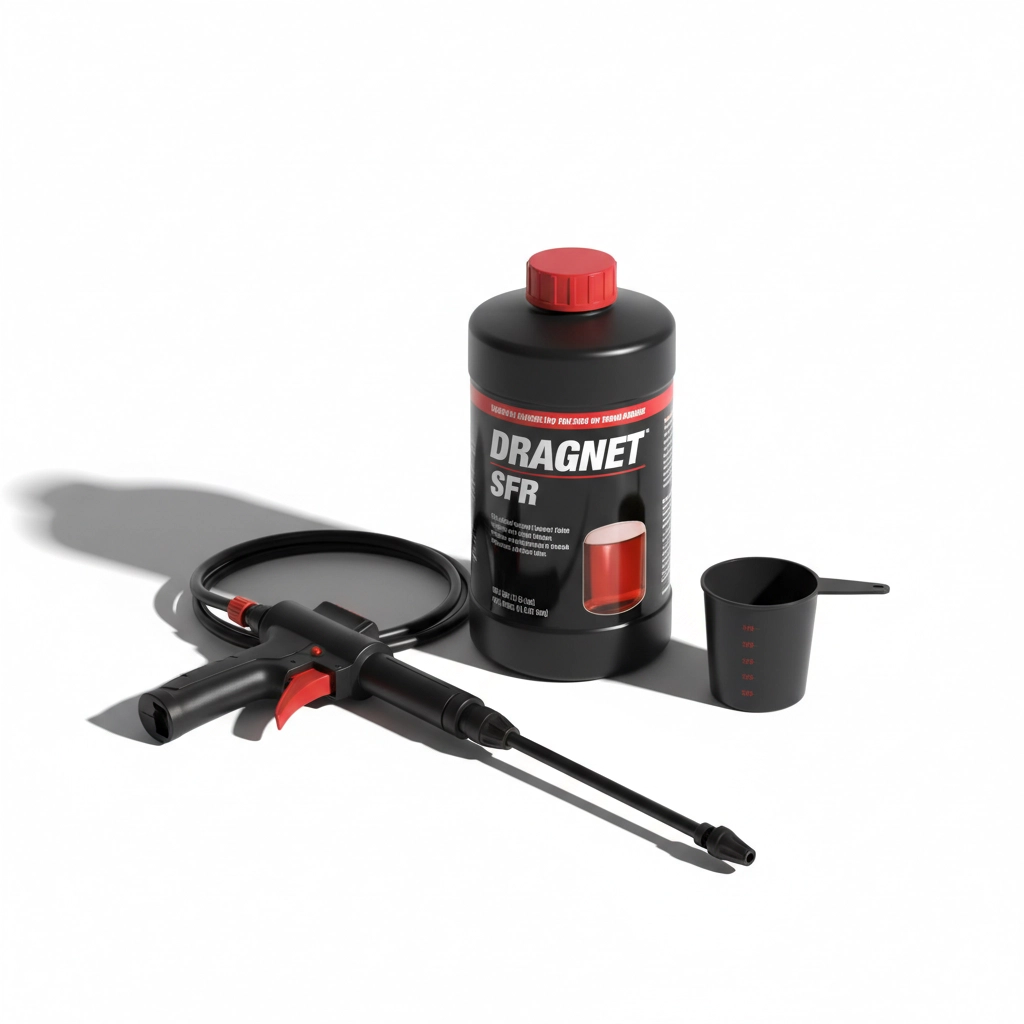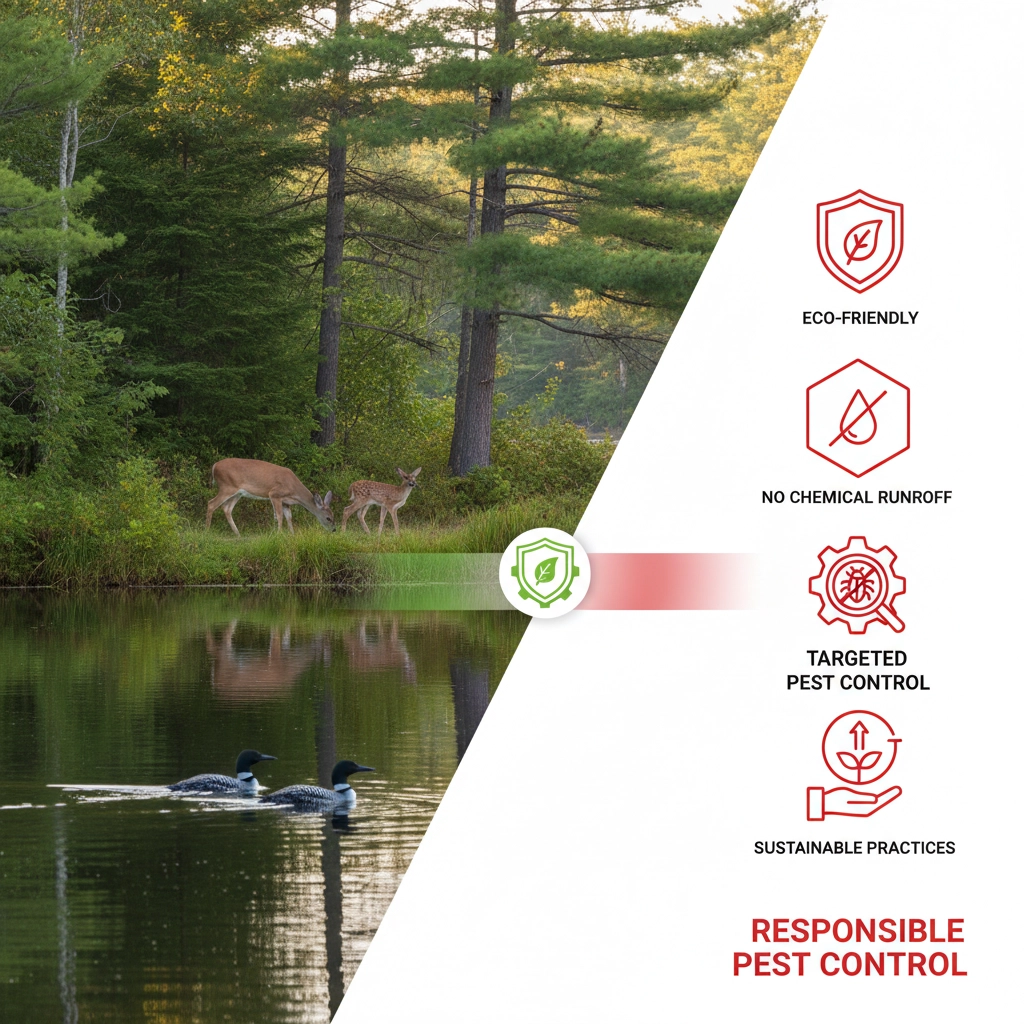Mosquito Treatment Options: Pros and Cons of garlic vs. Permethrin for Haliburton Properties
- Targeted Wildlife and Pest Solutions

- Oct 1
- 3 min read
Mosquitoes can quickly turn your peaceful Haliburton property into a frustrating outdoor space. With abundant lakes, wetlands, and forested areas, mosquito populations surge through the warmer months. When you weigh professional options, two approaches lead most conversations: garlic-based treatments and permethrin-based applications. Understanding how each works will help you choose what fits your property, priorities, and budget.
Understanding garlic Treatments
Garlic-based mosquito treatments use concentrated garlic extract applied to vegetation where mosquitoes rest: shrubs, trees, tall grass, and shaded areas. The treatment works mainly by repelling and masking cues mosquitoes use to find you. It does not provide strong knockdown. Residual effect is shorter and depends on weather and plant growth.
Applied correctly, garlic treatments create a perimeter on non-flowering foliage and high-shade zones around your home or cottage. They can be a good fit when you want a botanical option with minimal disruption and quick turnaround.

garlic Pros
Lower-impact, botanical option when used according to label directions.
Minimal disruption to outdoor use; odour typically fades within 12–48 hours.
Reduced risk to pollinators when applied to non-blooming foliage and off-peak hours.
Flexible for events or short windows of use.
garlic Cons
Shorter longevity. Expect about 7–14 days; heavy rain, wind, and UV reduce duration.
Primarily repellent. Limited knockdown means lighter results under heavy mosquito pressure.
Noticeable garlic odour immediately after service.
More frequent visits increase seasonal cost if you want continuous control.
Understanding Permethrin Applications
Permethrin-based treatments use a synthetic pyrethroid applied to foliage and resting sites. They provide contact knockdown and a measurable residual on treated surfaces. This approach targets where mosquitoes hide in the day and intercepts them at dusk when activity peaks. Labels typically restrict use near water, which matters across Haliburton’s lakefronts and wetlands.

Permethrin Pros
Strong knockdown for fast, noticeable reduction in bites.
Residual effectiveness typically 2–4 weeks, weather and site conditions permitting.
Reliable during peak pressure and on larger, wooded lots.
Professional application ensures even coverage of shaded, high-harbourage zones.
Permethrin Cons
Broad-spectrum impact. Can affect beneficial insects if misapplied; avoid blooms and time for pollinator inactivity.
Toxic to aquatic organisms. Maintain buffers from shorelines and follow setbacks and label directions.
Some formulations may stain sensitive surfaces; confirm product selection and test small areas.
Professional application required for best results and compliance.
Safety Considerations for Families and Pets
Safety comes first, especially with kids, pets, and abundant wildlife in Haliburton.
garlic treatments: Generally low-toxicity botanical products. Keep people and pets off treated areas until dry. Expect a temporary odour.
Permethrin applications: Keep people and pets off treated surfaces until dry. Extra care around cats, amphibians, and water features. Use licensed professionals and follow label directions.
Schedule treatments when pollinators are less active—early morning or evening. Avoid treating blooming plants. This reduces non-target exposure with minimal disruption to your routine.

Environmental Impact in Haliburton
Our lakes, forests, and wetlands demand careful choices.
garlic: Short persistence and a repellent mode of action reduce non-target impact when applied to non-blooming foliage and away from water. Reapply more often to maintain effect.
Permethrin: Effective but broader spectrum. Avoid water, respect buffer zones, and time applications to protect pollinators. Use an integrated pest management approach—focus on resting sites and remove standing water.
Both treatments should avoid drift into water and be applied under calm conditions. Local regulations and shoreland setbacks apply across Haliburton cottage country.
Cost and Duration Analysis
Your total cost depends on property size, pressure, and schedule.
Factor in weather, access, and timing around long weekends or gatherings. Aim for minimal disruption and long-term results with a plan that matches your use pattern.
Recommendations for Haliburton Properties
Choose garlic if you prioritize:
Botanical ingredients and a lower-impact approach
Short-term needs like events or company
Flexibility around pollinators and gardens
Minimal disruption with quick re-entry after drying
Choose Permethrin if you need:
Stronger knockdown and measurable reduction in bites
Longer intervals between services
Reliable performance under heavy mosquito pressure
A professional program with proactive scheduling
Making Your Decision
Match the treatment to your goals, tolerance for odour, proximity to water, and mosquito pressure. Many properties benefit from a season plan that includes source reduction, larval habitat management, and targeted treatments.
Reach out to Targeted Wildlife and Pest Solutions to discuss your property. We’ll assess shade, wind, shoreline buffers, and use patterns, then recommend garlic, permethrin, or a combined strategy for minimal disruption and long-term results in Haliburton County.
Comments